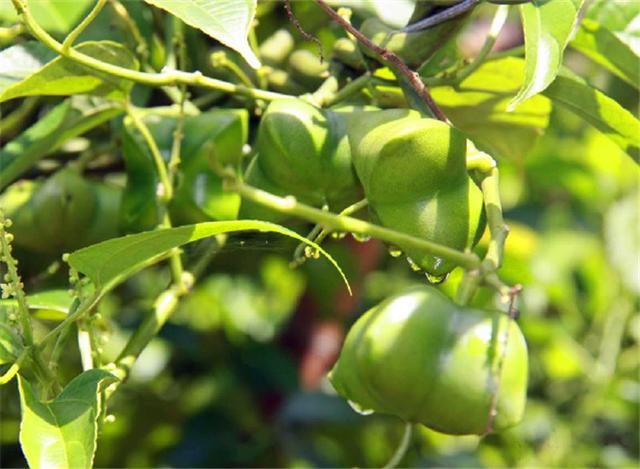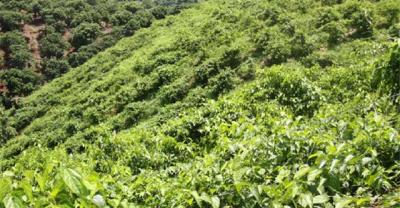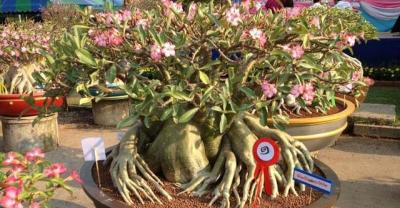Planting method of Tripterygium wilfordii in Guizhou area
Planting method of Tripterygium wilfordii in Guizhou area
Plukenetia volubilisLinneo, also known as South American oil vine, Inca fruit, Inca peanut, is a perennial woody vine of Euphorbiaceae, and its seed oil is edible. Originally grows in the tropical rain forest of the Andres Mountains of South America at an altitude of 80-1700 m. Originally transformed from the Incas into a family species, the Inca language known as Sacha Inchi has been used by indigenous peoples in South America for 3, 000 years. Star oil vines have been unearthed on pottery unearthed in ancient Inca and pre-Inca tombs. In 2006, the Xishuangbanna Tropical Botanical Garden of the Chinese Academy of Sciences was introduced and planted successfully. At the World Edible Oil Expo in Paris in 2004 and 2006, Sacha Inchi Oil (Peruvian crude oil) won the gold medal for its excellent senses and quality.
The main components of Tripterygium seeds are bioactive substances such as oil, protein, amino acids, vitamins and sterols, as well as secondary metabolites such as alkaloids, saponins and coumarins. The oil content of seeds is 45-56%, and the oil is mainly composed of polyunsaturated fatty acids. Sacha Inchi oil does not contain any toxins and substances harmful to health, and is a pure natural and organic food.
Tripterygium angustifolia is a kind of wild woody vine oil plant native to the tropical rain forest of South America, and it is a new type of high-grade health oil plant. Guizhou Subtropical crop Research Institute introduced Guizhou trial cultivation from Yunnan Xishuangbanna Botanical Garden for the first time in 2011. its cultivation techniques are still blank.

Planting method of Tripterygium wilfordii in Guizhou area
1) Seedling raising: in March 2011, the full seeds of Tripterygium sinensis were selected. After soaking the seeds in 40 ~ 55 ℃ warm water for 24 hours, the seeds were put into a sand bed with good permeability to promote germination. After 15 days, the seeds were exposed, and the seeds were taken out and planted in a pre-installed nutrition bag. The shading net was set up in a dawn shed and watered every other day. Transplanting was carried out in the field when the seedling height was 15-20cm in May.
2) Land selection: Tripterygium paniculata is a typical perennial woody vine evergreen oil plant in the south subtropics. It should choose areas with an average annual temperature of more than 19.5 ℃, an annual accumulated temperature of more than 6500 ℃, an annual rainfall of more than 1200mm, and a frost-free area with soil depth of more than 1m, soil PH value of 6.5m, slope of less than 20 °, gentle slope land of 420m above sea level, sand shale yellow soil, soil depth of 1m. The average annual temperature is 19.6 ℃, the annual absolute minimum temperature is 2.5 ℃, the annual active accumulated temperature of ≥ 10 ℃ is more than 6500 ℃, the annual rainfall is 1250mm, and the annual sunshine is 2575 h.
3) site preparation and pit digging: before digging the pit, it is necessary to remove the residual branches and fallen leaves, stones, etc., if possible, it can also be ploughed once, and then draw a line according to the row spacing of 3m and plant spacing of 2m to dig the pit at a fixed point; digging the pit: according to the fixed position determined, either manually or mechanically, the width of the pit surface is 70 ~ 80cm, the width of the bottom is 60 ~ 70cm, and the depth of the pit is 50 ~ 60cm. Backfill and application of base fertilizer: after digging the pit, the soil in the plough layer was first backfilled with 10 ~ 20cm, and then the farm manure 1kg was applied while returning to the soil 10cm, so that the backfill and fertilizer were mixed well as far as possible, until the soil was level with the pit surface, and then the covered soil was 8-15cm higher than the pit surface, and the bottom fertilizer was organic fertilizer, and farm manure 5 ~ 8kg or tung oil withered 1 ~ 2kg was applied to each pit.
4) Seedling setting: planted on May 4, 2011 On the planting nest where the bottom fertilizer is applied and the soil is covered, dig a nest with a depth of 18-25cm and a diameter of 20-30cm in the planting pit according to the straight line, arrange the seedlings to be planted according to the size of the nest, cluster the seedlings with large seedlings and seedlings as much as possible, cut and remove the nutrient bag of the seedlings with scissors, gently place the seedlings with soil in the dug nest, the stem base is 3 ~ 5cm higher than the soil plane, and trample the periphery of the bag soil after covering the soil. 8-12kg per litter of rooting water Within 20 days after planting, water was drenched every 4-5 days in sunny days to keep the soil moisture content at about 15% until the seedlings survived and shoots out.
5) erection: use stakes of 6 ~ 8cm in diameter and 230 ~ 250cm in length to plant a post every 3 ~ 4m, connect the posts in three layers with No. 10 or No. 12 wire, and then cross-tie the posts with 2 ~ 3cm bamboo poles to form a fence.
6) Field management: drip water once every 3-4 days after planting in spring until it is confirmed to survive 20 days after planting; check seedlings and replenish seedlings: 20 days before planting, the survival of seedlings should be checked frequently, and the dead plants should be made up with prepared seedlings in time to ensure that the whole seedlings are complete. After 20 days of seedling planting, the vines grow faster and gradually produce branches, which leads the vines to the support in time to avoid entanglement between vines and weeds or vines. Urea is used to lift seedlings once in 28-32 days, and 20 ~ 30g urea is applied to selected plants in rainy days. Fertilizer distance from plants must reach more than 20cm to avoid burning roots and seedlings. Combined with middle tillage and weeding, multiple compound fertilizer was applied once from July to August, 100 ~ 200g per plant, and farm manure was applied once from November to December, plant application of Tongyouku 1 ~ 2kg and compound fertilizer 200g, or stable fertilizer 5 ~ 6kg and compound fertilizer 200g.

Planting method of Tripterygium wilfordii in Guizhou area
7) pruning: after 60 days of planting, the branches branched faster, especially after some branches were damaged and dried up naturally after fruit picking, they soon produced new branches from the middle and lower parts and blossomed and bear fruit. The long branches, shade branches, disease and insect branches and dead branches should be cut off in time, and the cut twigs can be used as feed for livestock.

Planting method of Tripterygium wilfordii in Guizhou area
8) Prevention and control of diseases and insect pests: root rot, root-knot nematode, stem rot, locusts and some omnivorous pests of butterflies and moths are the main pests in the growth process. Timely inspection and monitoring of diseases and insect pests to avoid stagnant water and weeds in the field. In the early stage of the disease, carbendazim, Guangkuling, chlorothalonil, mancozeb, Bodhak, linophosphate EC and dichlorvos were used for prevention and control according to the standard dosage, and serious plots should be removed and burned and soil disinfected with quicklime.
9) Anti-cold and anti-freezing: star oil vine is not resistant to low temperature frost. In winter in Guizhou, when the temperature is below 10 ℃, it stagnates. When the temperature is below 5 ℃, it is affected by cold injury. If the low temperature exceeds 3 ~ 5 days, some leaves and young branches will gradually dry up and fall off or rot in water. Occasional low-temperature frost areas can be covered and bandaged with straw and plastic film in mid-late December to prevent cold and frost, with emphasis on protecting the middle and lower basic branches 0.8-1.5 meters from the ground, so that new branches can be reissued after the temperature warms up in the coming year.
10) harvesting: star oil vines blossom and bear fruit one after another with the growth of vine branches and mature harvest one after another. The concentrated harvest period is from September to February of the following year, and it usually takes 100 ~ 120 days from fruit to natural ripening. When the fruit grows full and gradually changes from light green to dark green and then to dark brown, some of the fruits will naturally crack and fall off after ripening. The mature fruits will be harvested regularly every 10 ~ 20 days, and the harvested fruits will be dried in time and then shelled.
- Prev

We should pay attention to these points when growing Chinese cabbage in summer.
The country still enters the summer, especially after the ambush, the weather is hot and hot. For some unseasonal vegetables, growth is a problem.
- Next

Planting time and cultivation methods of Brussels sprouts
The planting time of Brussels sprouts varies according to different production regions. The suitable sowing time for open-field cultivation in the Yangtze River Delta plain is from late June to mid-July.
Related
- Fuxing push coffee new agricultural production and marketing class: lack of small-scale processing plants
- Jujube rice field leisure farm deep ploughing Yilan for five years to create a space for organic food and play
- Nongyu Farm-A trial of organic papaya for brave women with advanced technology
- Four points for attention in the prevention and control of diseases and insect pests of edible fungi
- How to add nutrient solution to Edible Fungi
- Is there any good way to control edible fungus mites?
- Open Inoculation Technology of Edible Fungi
- Is there any clever way to use fertilizer for edible fungus in winter?
- What agents are used to kill the pathogens of edible fungi in the mushroom shed?
- Rapid drying of Edible Fungi

